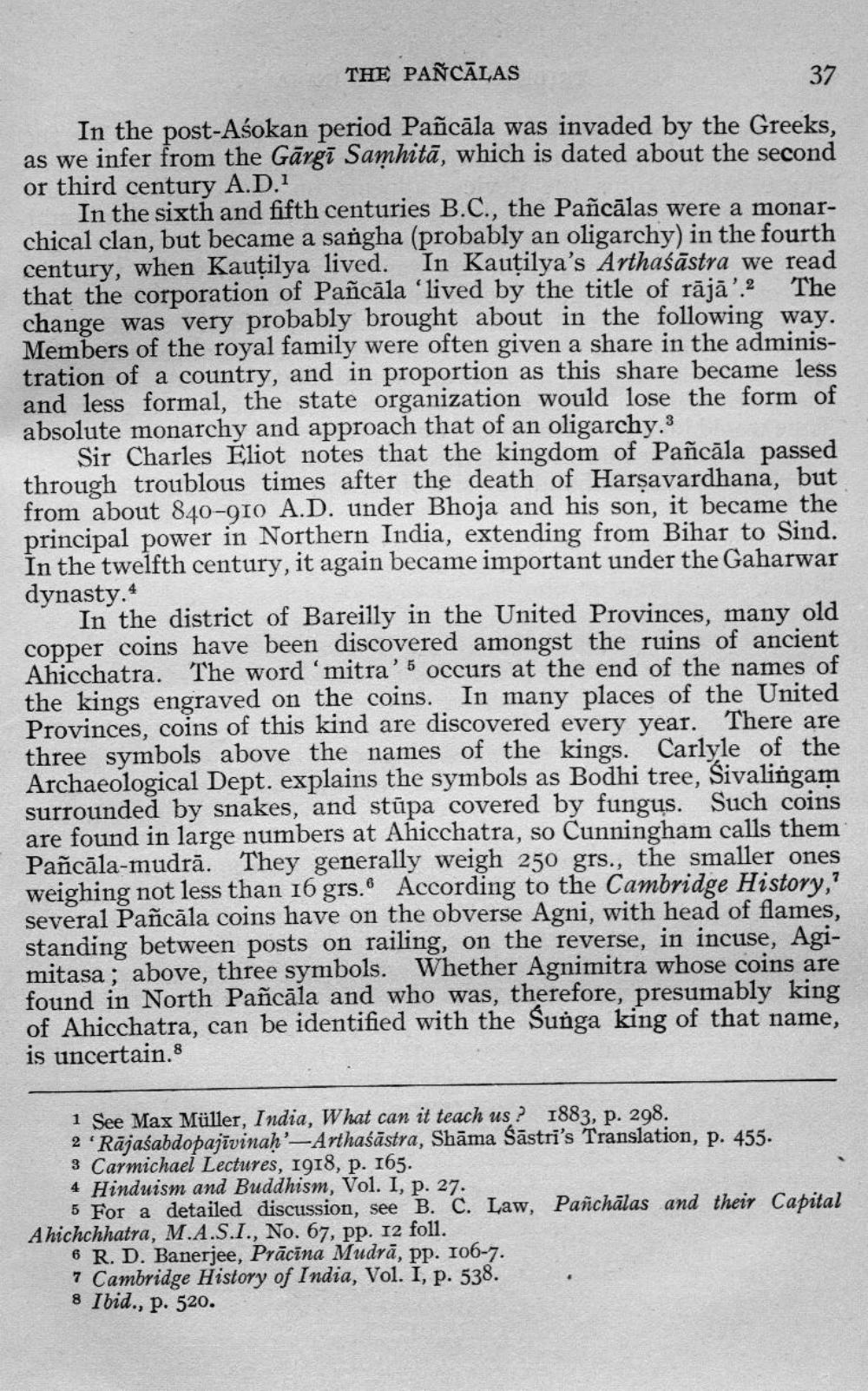________________
THE PANCALAS
37
In the post-Aśokan period Pañcala was invaded by the Greeks, as we infer from the Gärgi Samhita, which is dated about the second or third century A.D.1
In the sixth and fifth centuries B.C., the Pañcālas were a monarchical clan, but became a sangha (probably an oligarchy) in the fourth century, when Kautilya lived. In Kautilya's Arthasästra we read that the corporation of Pañcala 'lived by the title of raja'.2 The change was very probably brought about in the following way. Members of the royal family were often given a share in the administration of a country, and in proportion as this share became less and less formal, the state organization would lose the form of absolute monarchy and approach that of an oligarchy.3
Sir Charles Eliot notes that the kingdom of Pañcāla passed through troublous times after the death of Harṣavardhana, but from about 840-910 A.D. under Bhoja and his son, it became the principal power in Northern India, extending from Bihar to Sind. In the twelfth century, it again became important under the Gaharwar dynasty."
In the district of Bareilly in the United Provinces, many old copper coins have been discovered amongst the ruins of ancient Ahicchatra. The word 'mitra' 5 occurs at the end of the names of the kings engraved on the coins. In many places of the United Provinces, coins of this kind are discovered every year. There are three symbols above the names of the kings. Carlyle of the Archaeological Dept. explains the symbols as Bodhi tree, Sivalingam surrounded by snakes, and stupa covered by fungus. Such coins are found in large numbers at Ahicchatra, so Cunningham calls them Pañcala-mudra. They generally weigh 250 grs., the smaller ones weighing not less than 16 grs. According to the Cambridge History," several Pañcala coins have on the obverse Agni, with head of flames, standing between posts on railing, on the reverse, in incuse, Agimitasa; above, three symbols. Whether Agnimitra whose coins are found in North Pañcala and who was, therefore, presumably king of Ahicchatra, can be identified with the Sunga king of that name, is uncertain.8
1 See Max Müller, India, What can it teach us? 1883, p. 298.
2 Rajasabdopajivinaḥ'-Arthaśāstra, Shama Sastri's Translation, p. 455.
3 Carmichael Lectures, 1918, p. 165.
4 Hinduism and Buddhism, Vol. I, p. 27.
5 For a detailed discussion, see B. C. Law, Pañchalas and their Capital Ahichchhatra, M.A.S.I., No. 67, pp. 12 foll.
6 R. D. Banerjee, Präcīna Mudrā, pp. 106-7. 7 Cambridge History of India, Vol. I, p. 538. 8 Ibid., p. 520.




